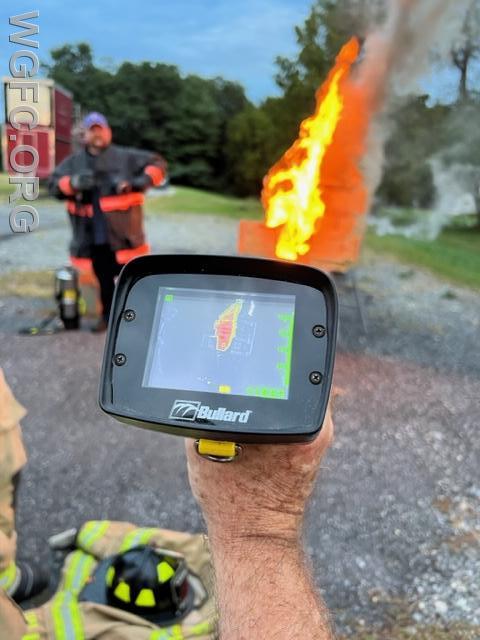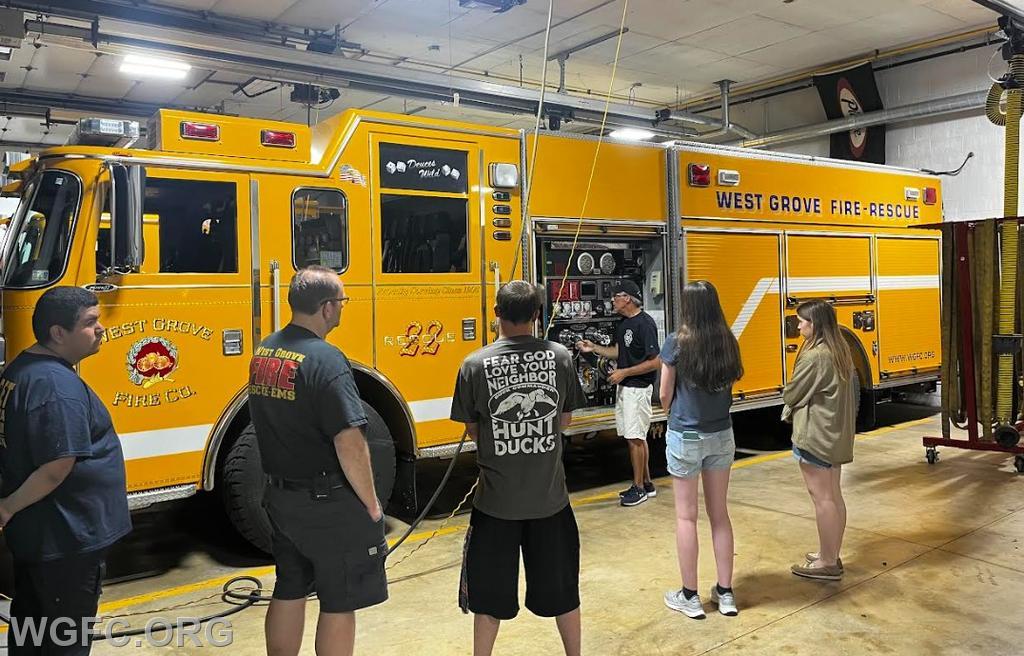| August 30, 2023 | |
| Behind the flashing lights and sirens, and the dramatic scenes at fires, there is real strategy and tactics used in firefighting. Gut feel and historical approaches have been replaced with a real understanding of fire dynamics and how to put that knowledge to work to drive modern approaches to attacking fires. Keeping up with the latest knowledge is what is at the heart of regular fire department training for newer firefighter and those with much experience. Such was the case with Monday evening's training at the West Grove Fire Company's New London Station. At the session, Deputy Fire Chief Josh Hawk provided an interesting demonstration of the realities of what is known as "fire flow path." Fire flow path is defined as the route that air/oxygen takes when it enters to feed the fire and the route that fire, smoke or heat takes to leave the building. Understanding fire flow can help firefighters determine what is happening in a burning structure, how to attack the situation, and how to contribute to fire extinguishment rather than make the situation worse. And, at the same time, help assure firefighter safety and more quickly reduce risks for potential victims. Deputy Hawk used a small, wooden demonstration home that featured window, floor, door, and roof openings that can be used to show firefighters how flow path works, and how their actions can shut down flow path and/or help flow path resolve situations. To do so, Deputy Hawk set a small fire in a downstairs room and helped show how heat and smoke moved throughout a structure. He demonstrated how a closed door prevents the spread of heat and smoke elsewhere in the building -- showing why closed bedroom doors save lives. He was also able to quickly show how having an open door or window allows for rapid escalation by providing fire flow with a fresh source of air to fuel the fire. One of the techniques used by firefighters is to "vent" a fire building. Venting means to allow smoke and heat to exit a fire room or the building. Getting heat and smoke out the structure helps firefighters and potential victims, but venting too soon or in the wrong way may quickly escalate a fire by providing an open flow path for air entry. The WGFC crews discussed when and how to vent, and the importance of matching venting techniques to having hoselines in place to attack the fire. For fires on top floors and in attics, Deputy Hawk showed the importance of opening up holes in the roof to allow extreme heat to vent out, making it possible for firefighters to fight those type fires. And, the simulator also allowed Deputy Hawk to discuss reading smoke, and the signals that smoke color and behavior are sending to firefighters about changing fire conditions. The WGFC has a strong reputation for continuous learning and training. In-house sessions are held each Monday evening, with firefighters also encourage to take county, state, and national level training as well. For more information on how to volunteer as a member of the WGFC, see https://www.wgfc.org/content/join/ |
|
| Units: | Rescue 22, Engine 22-3, Ladder 22, Engine 22-1 |




